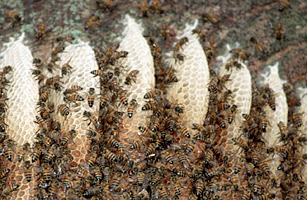
In 1957, a beekeeper in São Paulo, Brazil, accidentally released 26 Tanzanian queen bees who went on to launch an agricultural calamity, a horror-movie franchise and a whole new level of melissophobia. The queens mated with native European honeybees to create so-called killer bees, or Africanized bees — an especially aggressive species. Africanized honeybee swarms have been known to stage coups where they invade European honey hives, kill the European queen and install their own leader. The bees first infiltrated the U.S. in 1990 and have since spread to the southern parts of many states, including California, Nevada, Utah, Arizona, New Mexico, Texas, Oklahoma, Louisiana, Arkansas and Florida. Though movies such as the 1974 film Killer Bees have succeeded in instilling fear, the bees' venom is no more toxic than that of the European honeybee. They are, however, known to sting many more times, with some victims receiving more than 1,000 stings. In addition to being a threat to humans, they are also relatively lousy at producing honey — making them a threat to agriculture as well.